Lead-Acid or Lithium-ion?
The benefits and drawbacks of lead-acid and lithium-ion batteries in industrial material handling and how to convert from lead-acid to lithium-ion
General comparison
Operational Efficiency
While lead-acid batteries can only be discharged to 50-30%, lithium-ion batteries can safely handle up to 90%. In real life terms this means longer operational activity and less costly downtime where workers have to swap or charge batteries.
With clever planning of opportunity charging, lift trucks equipped with Li-ion batteries can operate with no downtime at all.
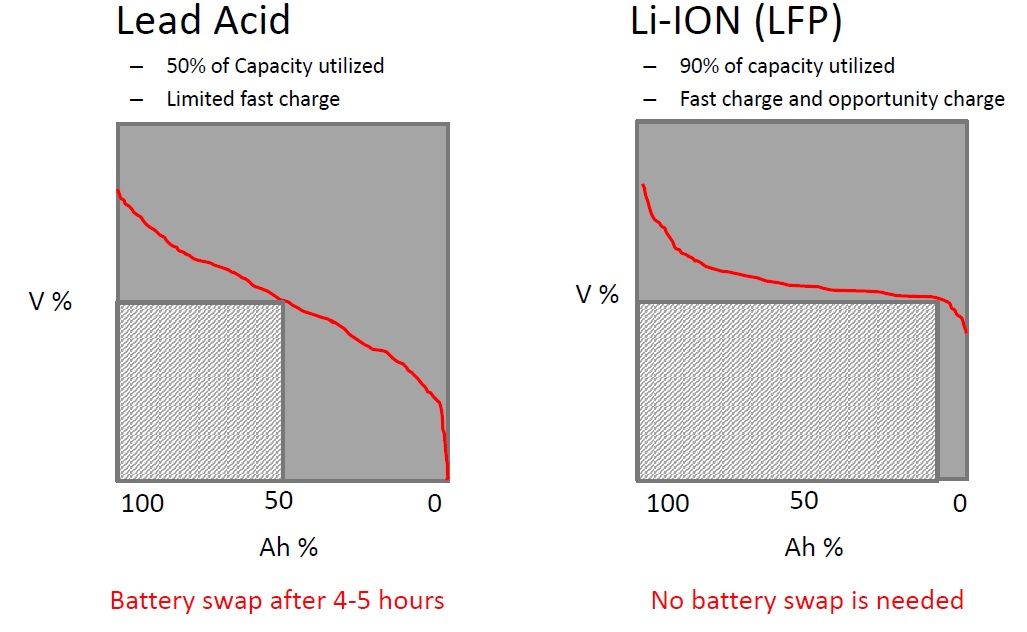
Charge cost and time reduction
Lead-acid batteries have a warm-up period before charging, requiring more energy and longer time to be fully charged.
In addition, lead-acid batteries have an approx. 8 hour “cool-down” period after charging, before they are ready to be used.

Cycle life
Lead-acid batteries have an average of 1500 cycles if maintained well. Without maintenance this drops to 6-700 at best. Lithium-ion batteries require no maintenance, and still have 80% of their original capacity after 3000 cycles.

Maintenance
As stated above, without maintenance, lead-acid batteries last for less than half of their original cycle life. Maintenance on the other hand is costly. Apart from the energy and manpower costs, it also requires a special maintenance room, as it emits toxic fumes during charging.
While initially lead-acid batteries are indeed cheaper, their TCO adds up significantly over the years.
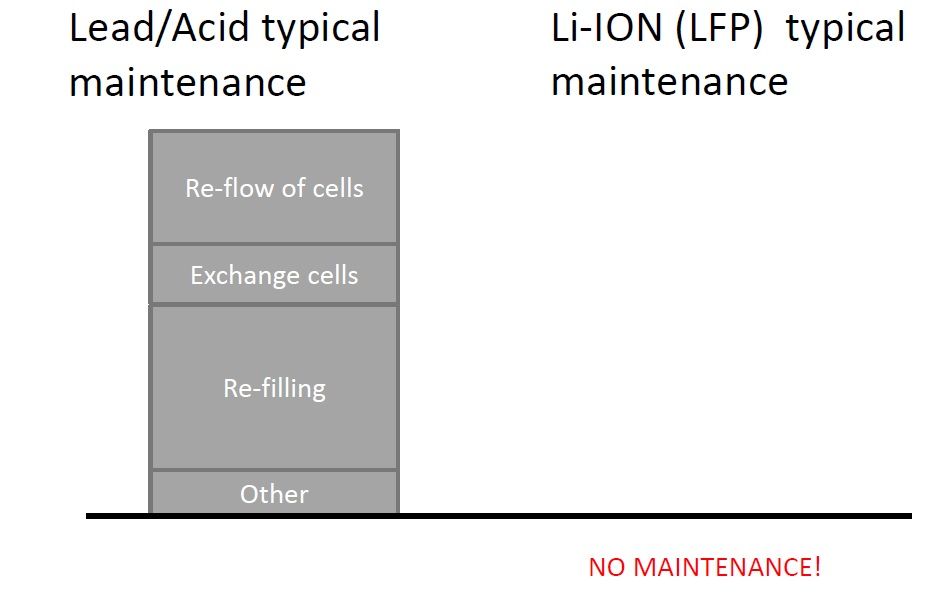
Clean energy
Batteries have no harmful emissions to the environment during usage, however there are CO2 emissions associated with them during production. Lead-acid batteries generate 50% more CO2 emissions from cradle to grave than Lithium-ion, and also produce acid fumes during charging and maintenance.
Lithium-ion batteries can also be used for longer, generating less toxic waste, and can be reused another time as a second life battery for energy storage.
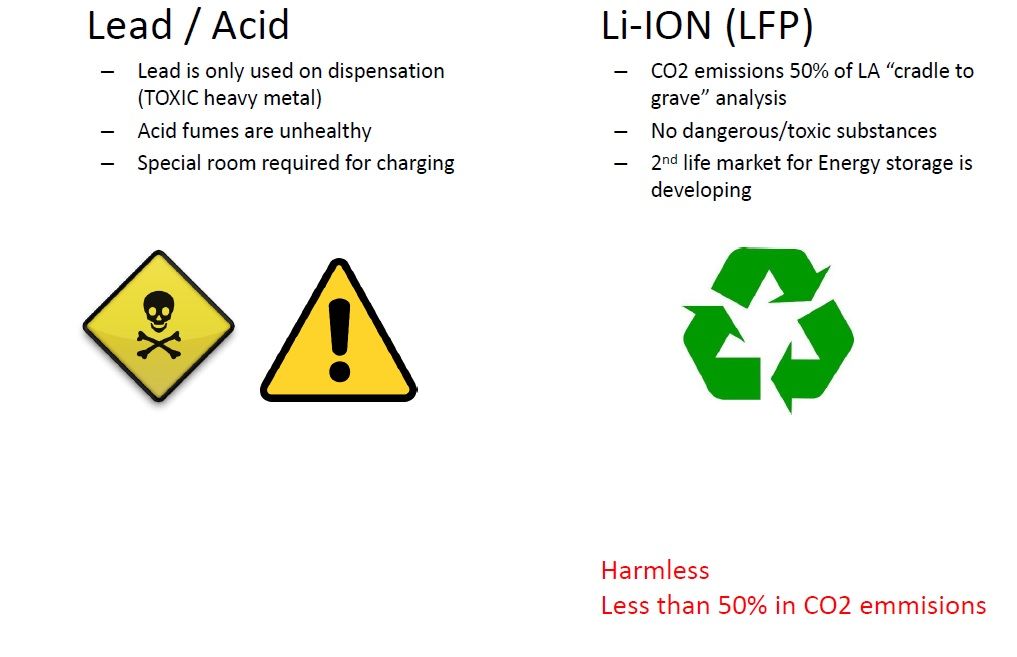
An intelligent battery
There are several clear advantages if lithium-ion batteries are considered as a long-term solution, it is no accident that some of the top material handling companies of today, such as Linde, Hyster-Yale, and Jungheinrich are highly in favor of them.
However, one key advantage easily overlooked is the intelligent component within them. All lithium-ion batteries are equipped with a BMS to ensure safety for the battery. While their main function is safety, these systems can be programmed with advanced algorithms to benefit the user with higher measurement precision, performance, and case-specific solutions that enhance the battery and the quality of the application.
Precision
The BMS system in lithium-ion batteries ensure an unparalleled precision in SOC, SOH, and SOP measurements, therefore leaving more room for optimization.
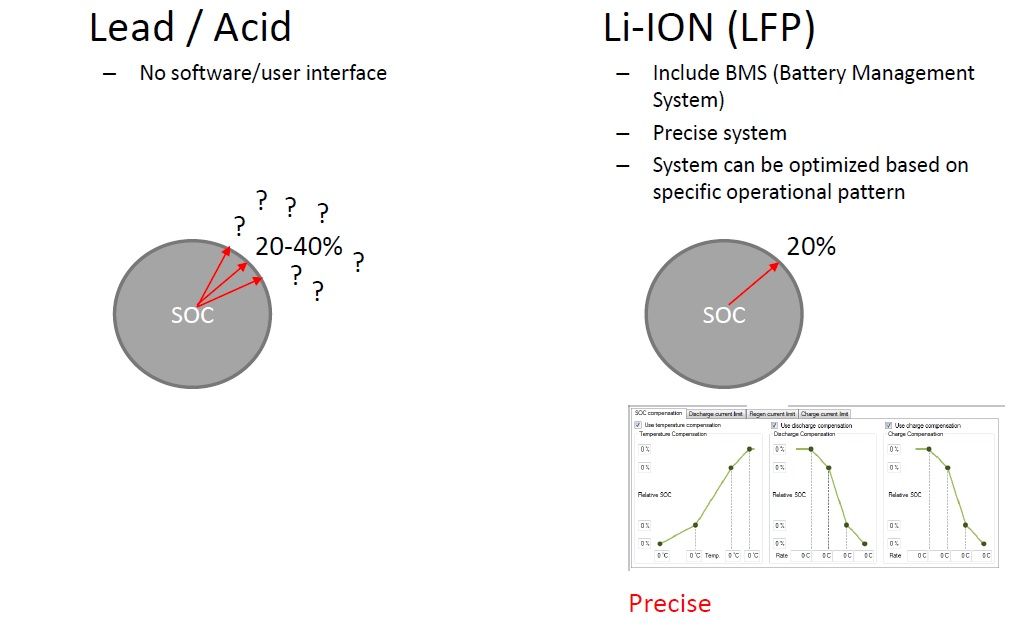
Visibility and control
The BMS within the lithium-ion batteries allow the monitoring and analysis of the battery performance within the lift trucks and other applications in order to protect it from unexpected maintenance breakdowns and optimize their performance.
This additional visibility and control over the batteries and applications enables operation and fleet management possibilities that are often not achievable with lead acid batteries.
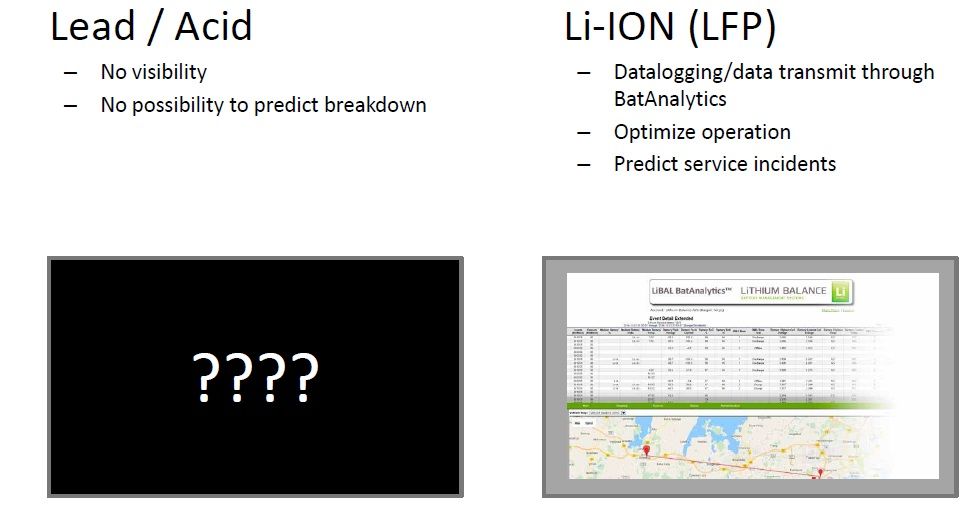
Solutions tailored for specific use-cases
Having an intelligent component within the battery also opens up ways to include functions that directly support the specific usage of certain applications, such as locking battery configuration behind password protection, or providing a “sleep-mode” for seasonal applications only used for a shorter period yearly.
Lithium Balance has been developing such solutions to address specific OEM needs for over a decade now, extending the functionality of our BMS’s by always focusing on our customers’ end use-cases.
